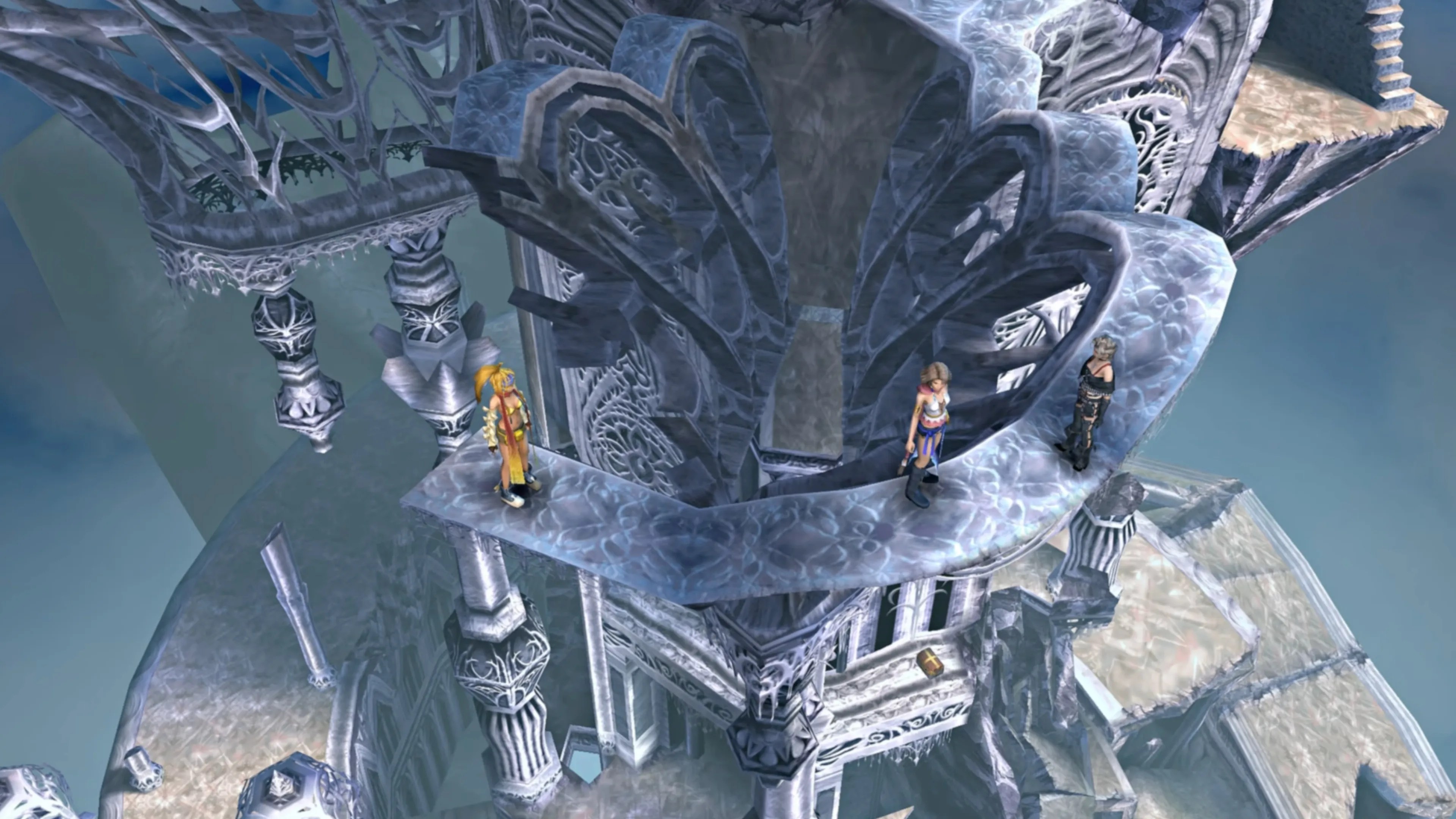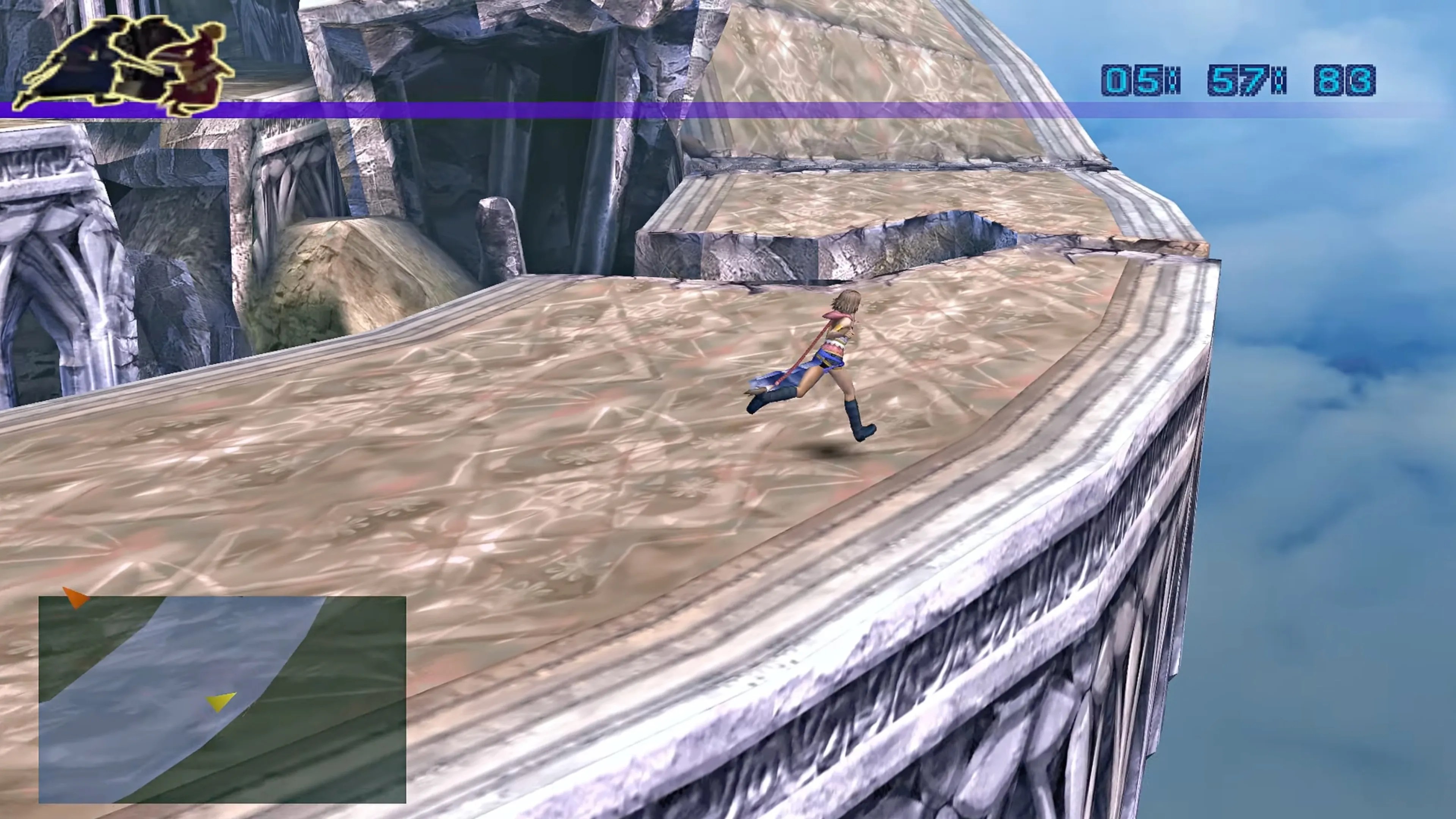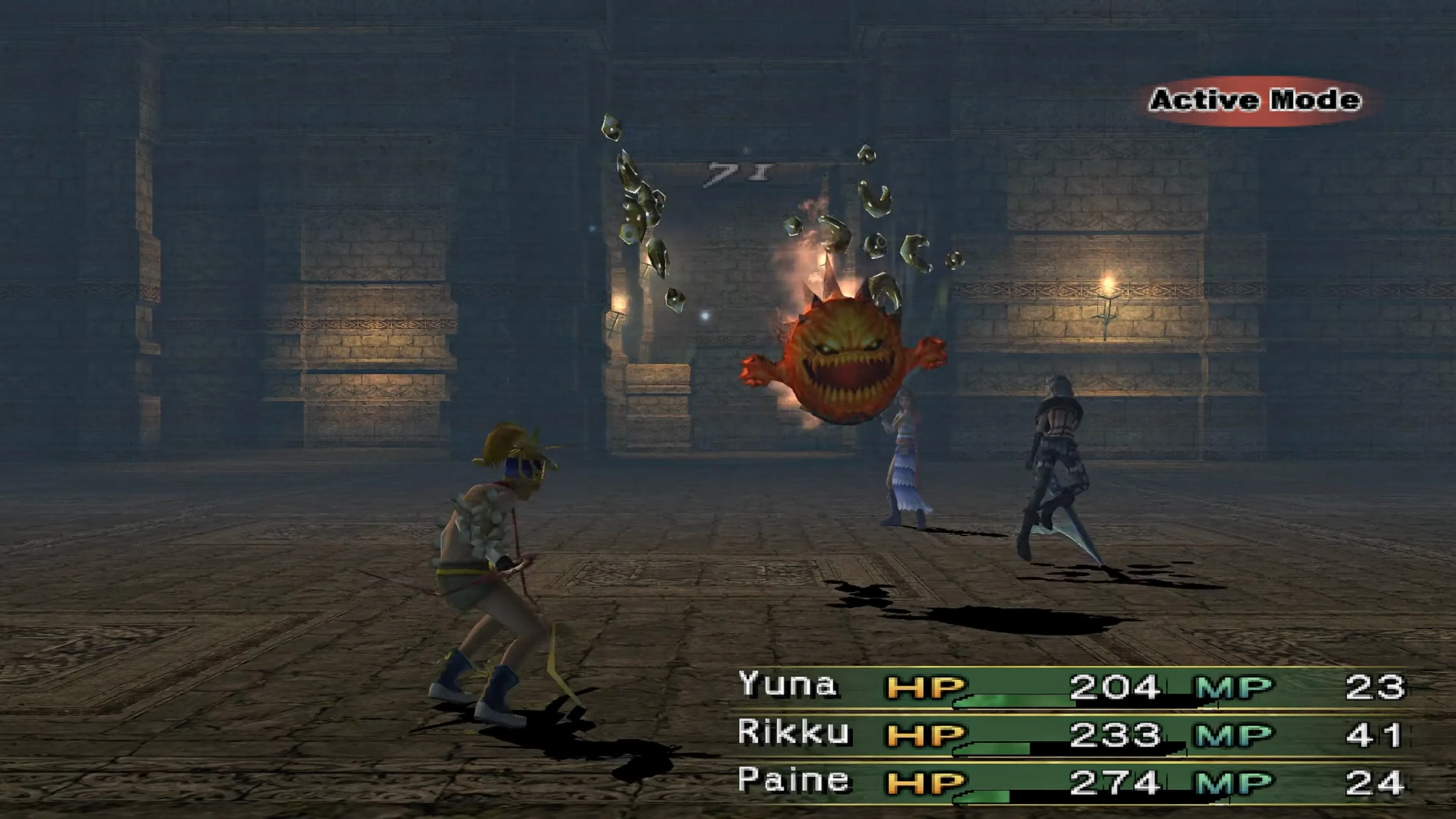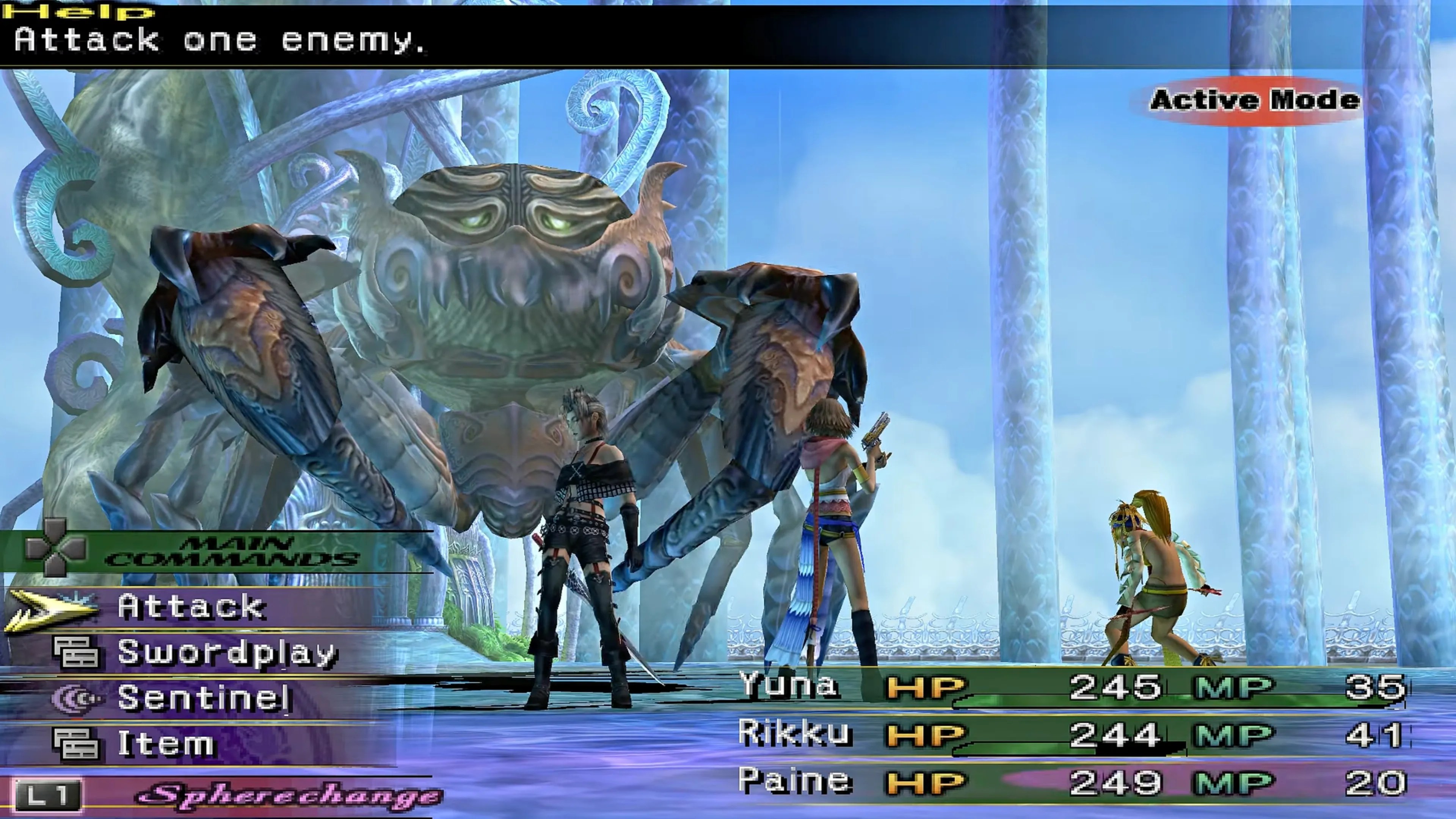ThePlayStation 2era was somewhat of a golden age for gaming. From cult classics to critically acclaimed masterpieces, the console’s library is the stuff of legend and something that few other consoles can rival. These days, the wait between big releases can feel like an eon, but during this time big publishers like Square Enix were releasing one hit after another.
We’ve already talked aboutthe best Square Enix games only available on the PS2, now we’re talking about those that have aged the best. Some games stand the test of time better than others, with what was once revolutionary quickly becoming dated. The games on this list have been ranked based on factors like legacy, gameplay, visuals, and how enjoyable their stories still are. We’ve omittedPersona 4, not because it hasn’t aged brilliantly (it has), but becauseit was only published by Square Enix in Europeas Atlus didn’t have offices there.

It wasn’t easy picking between Drakengard 2 and the original for this ranking. The original game, with its dark storytelling, grim branching narrative, and connection toNieR, has a cult following and is arguably more memorable than its blander younger sibling. But the original has aged poorly, thanks to its dull, dated environments and painfully stiff controls that make playing it a chore.Unless you’re a diehard fan, it’s really hard to go back to.
Drakengard 2is a different beast, largely due to Yoko Taro’s lack of involvement compared to other entries in the franchise. It lacks the original’s atmosphere and is a more conventional action RPG, but it’s also much better mechanically. The gameplay is much smoother, particularly the combat, which feels far less dated. So, it’s a less memorable experience but also a less painful one. However, compared to other action RPGs of the same vintage, it still hasn’t aged brilliantly. Its visuals were criticized back in 2005, and time has been even less kind. It’s a far cry from beingthe best Drakengard/ Nier game, but it is still more accessible than the original and a must-play for those interested in the franchise’s wacky lore.

Tactical RPGs usually age pretty well. Just look at the likes ofFinal Fantasy Tacticsand the originalFront Mission, two ofthe best 16-bit Tactical RPGs ever made. This is true ofFront Mission 4, an RPG where the two protagonists pilot mechs called Wanzers and fight other mechs across Europe and Venezuela. Just as you’d hope from any game with mechs, the mech customization here is nice and deep, and the turn-based battles are fun, well-balanced, and reward strategic thinking over brute force.
However, compared to modern tactical RPGs,Front Mission 4is missing some quality-of-life features that date it.The UI is clunky and messy, and the inability to speed up animations gets old fast.The pacing is also much slower than what modern RPG fans are used to, and the game doesn’t do a great job of explaining its systems (we’ve gotten used to having our hands held). For fans of old-school strategy games,Front Mission 4holds up well, but a few rough edges lead to a lower ranking.

Grandia 3’sgameplay has aged really well. Its battle system is the same active, time-based system from the earlier games but with some neat tweaks. It’s turn-based but much more dynamic than similar systems, thanks to the way the player can use combos to cancel enemy actions and punish airborne enemies with tricky air combos in return for better rewards. Modern JRPGs have increasingly moved away from turn-based systems in recent years because devs think modern gamers think they’re boring, butGrandia 3’sbattles are anything but.
This brilliant battle system is backed up by the game’s visuals.Grandia 3was released on 2 discs for the PS2, largely thanks to the very pretty (for the time) graphics and excellent world design.The graphics look dated now, especially the character models, but the game is far from ugly, especially compared to lower-ranking entries on this list. Unfortunately, the game’s story doesn’t hold up anywhere near as well. It’s a bit on the generic fantasy JRPG side and lacks the kind of depth we’ve come to expect.Grandia 2is considered one ofthe best JRPGs on the PS2, butGrandia 3’slackluster story holds it back now more than ever from reaching the highs of the earlier installment.

A little bizarrely,Final Fantasy X-2has aged worse than the game that spawned it. That’s a bit like a child looking older than their parents. To be fair, time has been kind to the game’s mechanics, and both the job-changing Dressphere system and incredibly fluid turn-based battles still feel fresh. With 17 jobs to choose from, there’s also a ton of choice to play the way you want, even if not all jobs are created equally.Final Fantasy 10was one of the prettiest games on the PS2, and its sequel still looks equally good, if not better, thanks to all the flashy new animations.
Instead, it’s the pop-inspired aesthetic and odd tone that age the game, like it still doesn’t know what kind of game it wants to be. It’s all a bit campy and cringey, in a way that a lot of modern gamers won’t appreciate. The structure of the side quests and minigames is also on the obtuse side.Final Fantasy 10-2’sbest ending is famously hard to unlock, andis basically impossible to get without an in-depth guide. With its unique sense of style and alterations to the franchise’s usual formula,Final Fantasy 10-2is an acquired taste that some will find has aged better than others.

For the most part,Valkyrie Profile 2has aged well. During the PS2 era, JRPG devs increasingly tried to innovate on their decades-old turn-based battle systems, endeavoring to make them more exciting and appealing to Western audiences.Valkyrie Profile 2’sbattle system is a great example of this.It blends turn-based mechanics with real-time elements and movement to create a unique blend of action and strategy.The result is a system that appeals to old-school aficionados without alienating newcomers who may be unfamiliar with old-school turn-based battles. Similarly the graphics, which were widely praised back in 2006, still hold up well.
The side-scrolling exploration is a breath of fresh air at first but becomes a little tedious thanks to an emphasis on backtracking and grinding, things modern RPGs are trying to avoid. The story’s pacing is also a bit on the slow side, with some chapters dragging on. Today,Silmeriaremains enjoyable for its combat and visuals, but some complex mechanics and story haven’t aged so well, leading to a mid-ranking.

Final Fantasy 12is the black sheep of the franchise. To some, it’s a masterpiece and one ofthe best Final Fantasy games;to others, it marked the beginning of the end for many of the elements they loved most about the franchise. When it was released in 2006,FF12was well ahead of its time, featuring an MMO-style battle system and an open-world approach to exploration that were major departures for the series. For the first time in the franchise, players could use scripts called Gambits to direct their party rather than controlling them directly through commands. The visuals were some of the best on the PS2 and have aged beautifully.
But ironically, these innovations also dateFinal Fantasy 12. Subsequent titles dropped more from the game than they adopted with the likes of the gambit system and licenses never to be seen again. This leaves it in a weird in-between place where it feels both new and old. On the bright side, the game’s intricate story and world-building have aged excellently (although Vaan remains the dullest of dull protagonists), and this is still one of the more uniqueFinal Fantasyexperiences.

Classic Disney films are pretty timeless, so it’s no surprise that, with its unique blend of Disney andFinal Fantasyelements, the originalKingdom Heartshas aged well. The combat starts simple but becomes more enjoyable, especially once you’ve progressed and gained more abilities, and the story is full of simple if slightly childish Disney charm. That story gets pretty convoluted in later entries, making the original a must-play for anyone hoping to dive into the series and understand what the heck is going on.
The only parts that haven’t aged quite so well are the graphics and controls. The Disney-inspired art can’t hide the fact that this game is over 20 years old, and the camera makes controlling Sora awkward, especially during the painful platforming sections. While it may lack the refined combat ofKingdom Hearts II, the original game’s charm, soundtrack, and storytelling ensure it has aged well.

Not many PS2 games have aged as well asDragon Quest 8. As a franchise,Dragon Questhas always been fairly adverse to change and, somewhat amazingly, Dragon Quest 8 was the first game in the series to use fully 3D models. Long after most other big-name JRPG franchises had made the same jump. It stuck the landing, though, andDragon Quest 8is one of the PS2’s best-looking games, mostly thanks to the cel-shaded graphics, which means the visuals have aged exceptionally well.
The gameplay has held up similarly well. The franchise rarely mixes up its formula, and the simple but strategic turn-based combat found here isn’t all that different from that found in the franchise’s most recent entry. It’s only, perhaps, in the early game difficulty and the need for grinding that the game is starting to show its age. But these are small complaints.The turn-based combat, open-world exploration, and charming voice acting make it one of the best entries in theDragon Questseries and one of the PS2’s best JRPGs.

Kingdom Heartsis a franchise that has grown up with its fans, and the first sequel showed few signs of growing pains. In almost every regard, it’s a big step-up from the original, particularly when it comes to combat and storytelling. Its battle system introduced new features like Drive Forms and Reaction Commands that make fights both engaging and technically deep. Action RPGs have come a long way in the last 20 years, but you wouldn’t really know it when playingKingdom Hearts 2.
The story has some pacing issues, but is much more mature than that found in the first game. Visually, the graphics were impressive back in 2006 and don’t look half bad today. It’s only really in the lack of HD textures and some poor AI thatKingdom Hearts 2shows its age. It’s still widely regarded as one of the best games in the series and a highlight of the PS2 era.

Just asFinal Fantasy 7marked a big jump for the franchise and JRPGs in general, so didFinal Fantasy 10. When it was released in 2001, people had never seen graphics like it, and both the pre-rendered cutscenes and in-game visuals were both eye-wateringly pretty at the time. It was also the first entry to include voice acting, a feature that helps make it one ofthe most timeless PS2 RPGs. Of course, the graphics are showing their age now, and the once-ground-breaking voice acting is a bit awkward in spots (that iconic Tidus laugh), but it’s all part of the game’s charm.
The turn-based battle system marked the end of an era and is one of the franchise’s best.The Sphere Grid was a big departure from what had come before it and offered players unparalleled freedom in how they built their party. The story is just as emotionally impactful and upsetting as ever, with it’s ending hitting as hard today as it did in the early 2000s.Final Fantasy 10made just enough innovations to the franchise’s decades-old formula to make it feel fresh while preserving what fans loved about it. Today, that approach means the game still holds up beautifully as it’s a brilliant midpoint between old-school JRPG design and modern innovations.